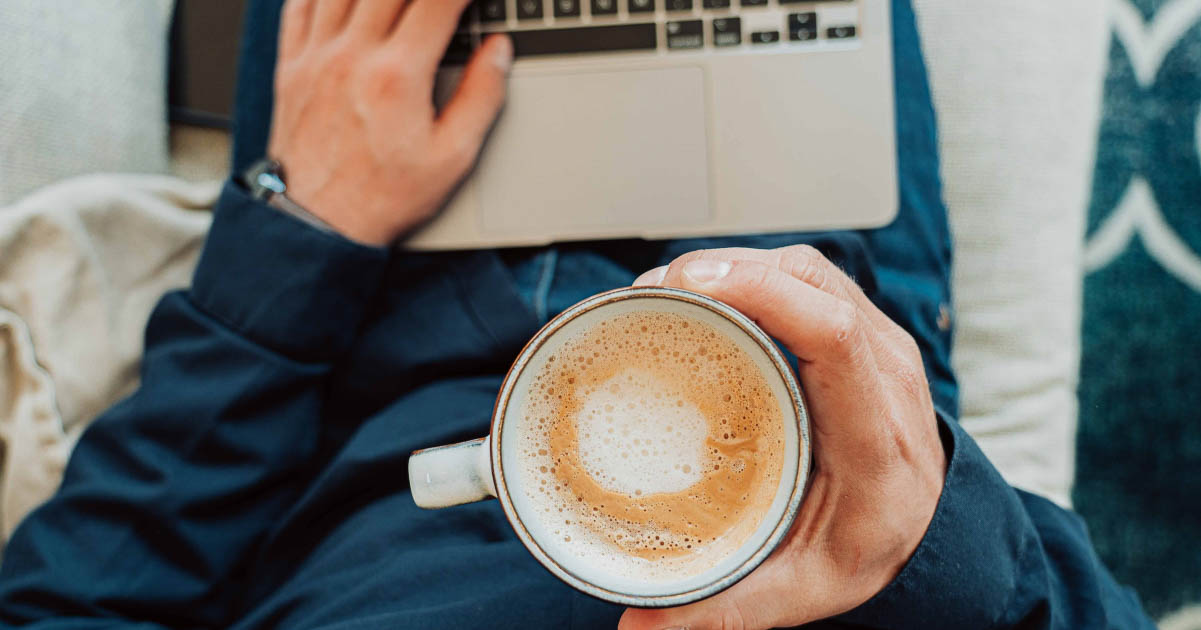
How to Take Effective Breaks (and Maximize Your Productivity)
Regular, effective breaks are an essential part of any workday. Without them, it’s easy to lose focus, make mistakes, or even burn out over time. This is especially true when you’re working from home, as the boundaries between work and free time can become blurred.
In this post, we take a look at exactly why breaks are so important and how you can make the most of yours while working from home.
The Benefits of Taking Breaks
If you’ve got a deadline coming up, or you’ve reached a flow state with your work, it can be hard to convince yourself to take a break. After all, as the old adage goes, time is money!
But, in the long run, avoiding breaks can have a damaging effect not only on your work but also on your mental and physical health. Taking breaks is good for you! Here are just a few reasons why you should be giving yourself some time off from work:
- Your focus increases – It might sound counterintuitive, but taking breaks actually improves your ability to focus on a task. This is because the mind can only spend so much time focused on something before it starts getting tired and bored. One paper, which analyzed findings from over 20 scientific studies, found that even micro-breaks (those of 10 minutes or less) can have a positive effect on wellbeing and work performance.
- You get better at problem-solving – When your mind isn’t focusing on anything in particular, it’s more inclined to wander. And while your mind is wandering, your problem-solving skills are at their best. This is when the brain explores different perspectives and makes connections that might otherwise be missed. Psychologists call this phenomenon “incubation.”
- You can manage stress better – Working nonstop means you’re leaving no outlet for stress, which can start to build up and eventually lead to burnout. A 2022 paper found that people suffering with burnout are more likely to suffer from a variety of physical health problems, as well as behavioral consequences like loss of motivation. Breaks are an important opportunity to unwind and release any stress that has been accumulating during your workday.
- Your physical health improves – Sitting down and looking at a computer screen for long periods of time can have a whole host of negative effects on your health – from eye strain and migraines to back, hip, and neck pain. A quick break can be a good opportunity to look away from the screen, stand up from the desk, and get moving. The American Heart Association recommends that adults get at least 150 minutes of moderate-intensity physical activity per week – that’s activities like walking, dancing, or gardening. A work break is a good time to fit that in!
In short, skipping breaks isn’t a route to increased productivity. It’s quite the opposite! Regular, well-structured breaks can help you stay alert, work more efficiently, and keep stress at bay.
How to Take Effective Breaks
Find a Technique That Works for You
So, we’ve established that breaks are essential. But how long should these breaks be, and how often should you take them?
There are many different break techniques out there, so it’s important to find those that work for you. Here are some of the more popular break styles you can try:
- Micro-breaks – These are short, frequent breaks that you take throughout the day. They can be anywhere from 30 seconds to a couple of minutes long and should occur roughly every 20 minutes. They generally involve quick activities like having a drink, stretching, or practicing the 20/20/20 exercise.
- The Pomodoro Technique – This technique involves using a timer to schedule your breaks. Set the timer for 25 minutes, then work until your time is up. Take a break for five minutes and then reset the timer. When you’ve completed four sessions (for a total of two hours), you can take a longer break of up to 30 minutes.
- The Flowtime Technique – This is a modified version of the Pomodoro Technique. Instead of working in fixed periods of time, you take breaks when you reach a natural stopping point. This allows you to work when you’re in the zone and take breaks when you’re not.
- The 112/26 Method – Originally, the creators of this technique actually recommended working for 52 minutes and then taking a 17-minute break. This updated version might seem random, but DeskTime, a time tracking app, claims that the most productive people currently work for an average of 112 minutes before taking a 26-minute break.
- Time Blocking – This is a time management method where you divide your day into blocks. Each block is dedicated to a specific task or set of tasks, with time factored in for regular breaks. Instead of having an open-ended to-do list, you have a concrete schedule for your day.
There’s no single “right” technique. Feel free to combine approaches to find a schedule that helps you recharge.
Make Breaks Part of Your Daily Schedule
To reap the benefits of taking a break, it’s best to plan them into your routine. Otherwise, it’s easy to forget to take them – especially if you’re busy.
Remember to consider your body clock when scheduling breaks. If you know you’re likely to feel sluggish in the afternoon, plan a longer break then – maybe a walk outside in the fresh air to rejuvenate yourself. That said, don’t feel that you must rigidly follow your schedule if you’re on a roll. The key is ensuring that breaks happen at some point, rather than skipping them entirely.
Keep Track of the Time
Whatever technique you use to help you get away from your desk for a few minutes, it’s important to keep accurate records of how you have spent your time. Documenting your working hours can help you understand your own patterns of productivity. Having this information to hand means you can accurately assess how long a project may take, how much you should charge for a project, and, most importantly, how much time you should allow yourself for breaks.
There are many tools you can use to keep a record of how you spend your time. If you prefer to track your productivity digitally, here are a number of apps specially designed to help freelancers record their time and productivity. A simple hand-written diary can be an effective way to note how you have spent your day without any additional distractions.
Spend Your Break Time Wisely
Taking a break means more than just spending a few minutes away from your desk. Make the most of your downtime by choosing activities that boost your wellbeing rather than drain it. Here are some ideas:
- Relax – Take the time to brew a cup of tea, read a book, do some gentle stretches, or practice some mindfulness exercises.
- Work on a skill – Use breaks to practice a hobby, learn a new language, or work on your professional development goals.
- Socialize – A quick chat with a friend, family member, or even other freelancers can boost your mood and get your mind thinking about things other than work.
- Exercise – Go for a short walk or try a few minutes of yoga. Keeping active throughout your working day is excellent for both mind and body.
- Tidy up – Decluttering your workspace or tackling a quick household chore can help you feel accomplished and reduce distractions when you return to work.
- Rest your eyes – Even closing your eyes for a minute can reduce strain. For longer breaks, a power nap might do the trick. Just remember to set an alarm!
What you should avoid is turning your break into extra screen time. Checking emails, scrolling on social media apps, or playing online games can blur the lines between work and leisure. This can leave you feeling more fatigued, reduce productivity, and even lower your mood.
Try Meditation and Breathing Exercises
Even a short break can be enough time to practice mindfulness or breathing exercises. For instance:
- Find a comfortable sitting position and close your eyes.
- Place one hand flat on your belly and the other on your chest.
- Breathe in as deeply as you can through your nose.
- Exhale slowly through your mouth.
- Continue for a few minutes, focusing on the sensation of breathing.
This simple exercise helps clear the mind, ease tension, and keep stress levels manageable. If it doesn’t resonate with you, try other relaxation techniques – there are plenty of alternatives out there!
Fuel Your Mind and Body
Nutritious foods can fuel both your body and your mind. Having healthy snacks during your breaks supports better concentration over the course of the day. Here are some easy, healthy snack ideas from Healthline:
- Nuts, seeds, and dried fruit
- Roasted chickpeas
- Apples and peanut butter
- Carrots and hummus
- Bell peppers and dip
- Baked veggie chips
It’s also important to stay hydrated by drinking plenty of water. That might seem obvious, but research shows that 75% of Americans are chronically dehydrated! Staying hydrated can boost memory, mood, and cognition – all very important if you want to be more productive at work.
Start Working Remotely
Effective breaks are the key to staying productive, happy, and healthy when working from home. If you’d love the flexibility of working remotely but need help boosting your skill set, Knowadays can help! We provide self-paced, CPD-accredited courses in proofreading, copy editing, content writing, and copywriting. You can even try some free lessons to see if our courses are right for you.
Updated on March 25, 2025





Your email address will not be published.